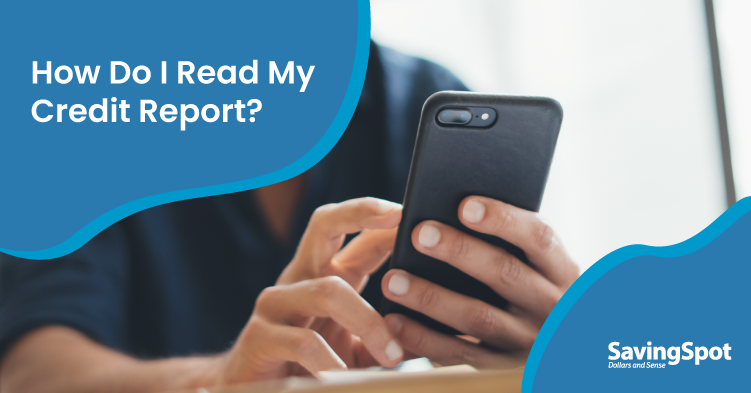Maintaining healthy credit takes more than making on-time payments. There are many other factors that go into calculating your FICO score. One of them is your credit utilization ratio. Your credit utilization ratio tells you how much credit you’re using. It’s a key factor that credit bureaus and lenders look at to help determine your creditworthiness. Here’s what you need to know about credit utilization ratio and how it impacts you.
What is a credit utilization ratio?
Your credit utilization ratio is the amount of credit you’re using divided by the amount of credit available to you. It’s the second-most important factor that contributes to your FICO score, with a lower ratio being considered more favorable.
Only your revolving credit accounts — like credit cards and lines of credit — count toward your credit utilization ratio. For instance, when you take out a credit card, you’re given a credit limit that you can borrow up to. Then you take out a personal line of credit which also has a credit limit. Your credit utilization ratio would be the total of credit you’ve used across all revolving credit accounts divided by the total of your credit limits across all of your revolving credit accounts.
Your credit utilization ratio can be calculated for each account as well as all of your accounts total.
Does your credit utilization ratio affect your credit score?
Yes, your credit utilization ratio can significantly impact your credit score. With FICO’s credit scoring model, 30% of your score is based on a category that tracks how much debt you carry in total called “amounts owed” — which includes your credit utilization ratio. The only factor that affects your score more is your payment history.
A high credit utilization can negatively impact your score, which can lead to higher interest rates and less favorable borrowing terms.
What is a good credit utilization ratio?
A good credit utilization score is typically considered to be under 30%. A low credit utilization rate suggests that you’re good at managing your credit and you’re not relying too heavily on borrowed funds.
According to FICO, the account balances that show up on your credit report may not be the current balances on your card. Some credit card companies report the amount owed from the last monthly statement. So even if you pay off your credit card balances every month, it may not show up as zero on your credit report. This isn’t a bad thing though, a low credit utilization ratio can be more beneficial than not using any of your available credit in some cases.
How to calculate your credit utilization ratio
Calculating your credit utilization ratio is pretty simple. You need to divide the total amount you owe by your total available credit. To calculate your total available credit, add up the credit limit for every credit card and line of credit. To calculate your total credit balance, add together the balances owed on each.
Then you’ll divide your total balance by your total available credit. To get a percentage, multiply by 100. Here’s an example.
Let’s say you have a credit card and a line of credit with the following limits and balances.
- Credit card
- $10,000 limit
- $3,000 balance
- Line of credit
- $5,000 limit
- $750 balance
Here’s how you would find your total credit utilization ratio:
- Total credit limit: $10,000 + $5,000 = $15,000
- Total credit balance: $3,000 + $750 = 3,750
- $3,750 / $15,000 = .25
- .25 x 100 = 25% credit utilization ratio
Calculating your credit utilization ratio by account is ever simpler. For example, to find your credit card utilization ratio you would just divide 3,000 by 10,000 to find that your card has a 30% credit utilization ratio.
What’s more important? Your utilization ratio per card or total credit usage?
Credit bureaus look at both your per-card ratio and your total credit utilization ratio, and both can affect your credit score. Opening a new credit card and keeping the balance at $0 will help your overall credit utilization ratio, but cards with high (or maxed out) balances can still negatively impact your score. When working to improve your utilization rate, keep both numbers in mind.
How to improve your credit utilization rate
If you want to improve your credit utilization ratio, here are a few things you can try.
Pay down your balances. Paying down your balances reduces the amount of credit you’re using. This is one of the most effective ways to lower your utilization ratio, but sometimes it’s easier said than done. Paying off debt can be a journey but it will help you build a good credit score.
If you’re having trouble tackling your debt, you may consider opening a balance transfer credit card. It will increase the amount of credit available to you and it can help lower your payments. Just be careful that you keep your spending habits in check. Consolidating your debt won’t help if you run up more charges on your credit cards.
Request a credit limit increase. If you have a good credit history and you’ve been diligent about making your payments. You can talk to your lender or credit card issuer about getting a credit limit increase. A higher credit limit will increase the amount of credit available to you, which can help bring down your credit utilization ratio. Just make sure you don’t start spending more too.
Use credit responsibly. Be mindful of how you’re using your credit cards. Try to keep your balances manageable and be sure to make timely payments. You should monitor your credit score to make sure you’re on the right track. You can get a free credit report from each of the credit bureaus every 12 months and you can find free credit scores online through sites like Credit Karma. You may want to sign up for a credit monitoring service as well. They can help you detect fraud early and keep your credit safe.
The experts weigh in: What’s one thing most people don’t know about their credit utilization ratio?
A low utilization rate may be better than no utilization rate.
“One thing that most people don’t know about their credit utilization is that a 0% utilization can have an adverse effect on their credit score. Your credit utilization is based on your revolving debt usage, so if you don’t have any revolving debt, then you don’t have any usage. For my clients who are actively working on improving their credit, I always educate to let 1% of their credit balance rollover to next month so they have some utilization to report.
“To take this a step further, for those who are living debt free, they need to monitor their zero balance accounts and use their cards periodically to keep them active. Most institutions close accounts after 24 months of inactivity. Closed accounts can have a negative effect on your overall credit score because your total available limit decreases, which can significantly increase your credit utilization percentage depending on your current profile.”
Christina Grove, Financial Coach
Prosperity Grove
Article Contributors

Christina Grove, Financial Coach
My name is Christina Grove. I'm a financial coach and the founder of Prosperity Grove where I help single parents feel safe and secure in their relationships with money so they can lead a prosperous lives. I have 20 years of experience working in the financial services sector, including debt collection, banking, and investments.




